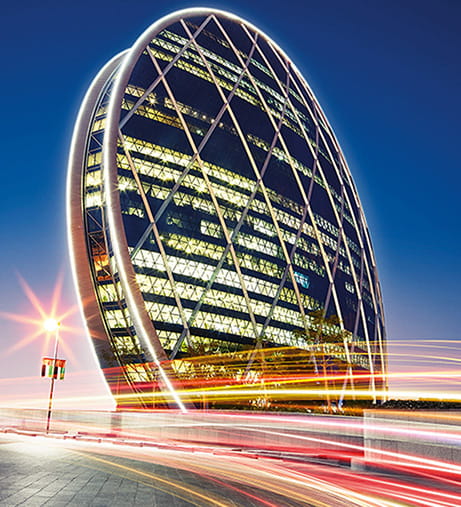#Featured
November 15, 2023
The Influence of Green Spaces on Property Values
Urban development is undergoing a dramatic transformation in the 21st century as cities increasingly strive to become sustainable cities. This shift is fueled by the growing need for environmental sustainability and a desire to create a greener community. By integrating eco-friendly practices and focusing on sustainable living, urban planning is moving away from traditional designs and moving toward creating a green environment that prioritizes both livability and ecological balance.
A key aspect of this evolution is the increased incorporation of green spaces into urban areas. These spaces not only offer aesthetic benefits but also significantly enhance the quality of life for residents. In addition, green environments directly impact property values, making them an important consideration for modern urban planning.
Read on to explore the profound effect of green spaces on property values, and discover why their integration is essential in building a sustainable city and fostering a healthier, more livable environment for all.
Definition, Importance, and Examples of Green Spaces
The term green spaces refers to areas within an urban setting that are primarily covered by vegetation.
Green spaces are vital in urban areas, improving air quality and mitigating urban heat islands. Socially, they serve as communal spaces for recreation and community engagement, fostering a sense of belonging among residents. Aesthetically, they enhance the visual appeal of neighbourhoods, creating a more pleasant and inviting environment.
Examples of green spaces encompass a wide range of environments, such as:
Public Parks and Gardens
They provide a natural escape in urban settings and serve as venues for community events and cultural activities.
Community Gardens
These spaces encourage community involvement and allow urban residents to engage in gardening and local food production.
Nature Reserves and Greenways
They preserve local biodiversity and offer educational opportunities about local flora and fauna, in addition to recreational benefits.
Impact of Green Spaces on Property Values
According to research, green spaces have been found to positively affect the value of nearby properties. This impact is complex and has various factors, mainly:
Aesthetic Appeal
Properties with views of green spaces often have a tranquil ambience, which is highly appealing in the bustling city life.
Recreational Value
Green spaces offer recreational facilities that promote health and social cohesion - a stark contrast to the digitally fueled childhoods we’re witnessing now.
Environmental Quality
Proximity to green spaces often means a healthier living environment with better air quality and natural cooling, making these areas more desirable.
Case Studies and Research
Research studies have shown that green spaces can positively impact property values. These studies provide real-world examples and analyses to support this conclusion, which is valuable for understanding the benefits of green spaces.
Limbird Real Estate Group Case Study
A Limbird Real Estate Group case study in Northwest Arkansas showed significant market value increases for properties near trails and parks. This case study highlights the region's natural beauty and the value residents place on access to outdoor recreation.
The findings from Limbird Real Estate Group provide a compelling argument for incorporating green spaces in urban planning, emphasising their appeal to homeowners and potential buyers for their connection to nature and outdoor leisure activities.
Michigan State University Study on Urban Green Spaces
Michigan State University conducted a study to investigate how urban parks and green areas impact the value of nearby properties. The study found that green spaces enhance the visual appeal of urban neighbourhoods, foster community engagement, provide recreational opportunities, and improve the environment.
Additionally, the study compared property values in areas with and without nearby green spaces and found that property values are generally higher in neighbourhoods with green spaces.
Studies like these are crucial for urban planners, policymakers, and developers. They demonstrate the economic and social advantages of integrating green spaces into urban development.
Designing Effective Green Spaces
The design and planning of green spaces are crucial in maximising their impact on property values. Essential elements of effective green space design include:
Accessibility
Easy access to green spaces for all residents is essential. This includes considerations for disabled access and connectivity to public transport.
Diversity in Use
Catering to a wide range of activities — from playgrounds for children to quiet zones for relaxation — enhances the appeal of these spaces.
Sustainable Practices
Incorporating sustainable practices, like native plantings and water-efficient landscapes, is vital for the long-term viability of these spaces.
Challenges and Considerations
While green spaces bring numerous benefits, their integration into urban areas presents several challenges:
Financial Constraints
The initial investment and ongoing maintenance of green spaces can be significant, often requiring creative funding solutions such as public-private partnerships.
Urban Planning Balance
Urban planners must balance the preservation of green spaces with the need for residential and commercial development.
Diverse Needs
Designing green spaces is a complex task that involves catering to the diverse needs of urban populations, including different age groups, cultural backgrounds, and interests.
Environmental Impact
Green spaces must not inadvertently harm local ecosystems, requiring careful planning and sustainable practices.
Social Equity
Ensuring equal access to green spaces across different socio-economic groups is crucial, as these areas are often less available in lower-income neighbourhoods.
Future of Green Spaces and Sustainable Living
Urban planning is actively evolving to integrate green spaces and sustainable living principles. The rising popularity of green homes and the focus on energy-efficient lifestyles signify a shift towards more environmentally conscious urban spaces.
This trend suggests a future where green spaces become a fundamental aspect of sustainability strategies within urban design, playing a pivotal role in enhancing the health, well-being, and sustainability of urban communities.
It is evident that green spaces have a significant impact on property values. They are aesthetic enhancements and pivotal components in the urban environment. Green spaces contribute to cities' economic, social, and environmental makeup. Hence, it's crucial to integrate them as urban landscapes continue to evolve. By doing so, we can help shape sustainable and livable communities for generations to come.

